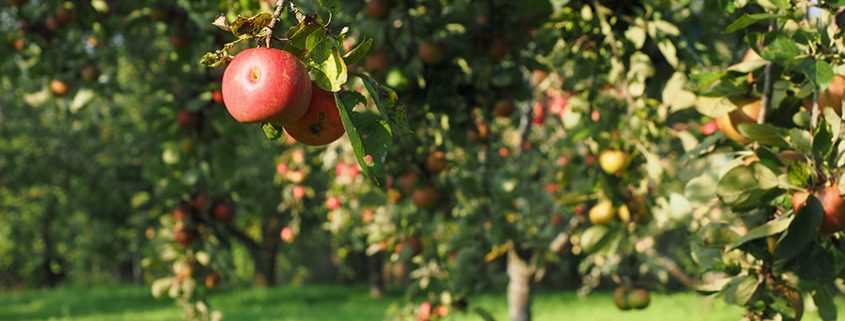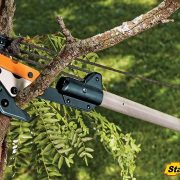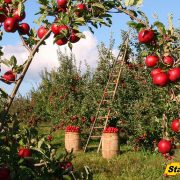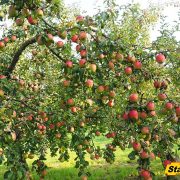Pruning Apple Trees | When is the Ideal Time for Pruning Apple Trees
Apple trees are extremely resilient and grow well in most planting zones, but pruning apple trees annually is crucial for optimum fruit production. The most productive growth areas for apple trees are zones 4 through 7. In addition to improving fruit production, pruning apple trees can also maintain the overall shape of the trees to beautify your landscape.
The Ideal Time for Pruning Apple Trees
The best times for pruning apple trees is late winter and early spring. For the best results pruning should be performed during the trees dormant season and prior to the appearance of any new growth. Properly pruning a tree in the winter months will stimulate growth for the upcoming season. Any pruning performed during the actual growing season will hinder regrowth and should be avoided if possible.
The Proper Method for Pruning Apple Trees
Clean Up:The first step is to clean up the tree. Start by pruning away any branches that are damaged, dead, or show signs of disease. We call this the “Three D’s of Pruning”. Remove any sprouts that may be protruding from the base of the trunk. We refer to these as “Suckers” and they generally will not bear fruit. Hence the name! Remove any “waterspouts”. These are suspicious looking branches that stand perfectly erect on the top side of the main branches. In each case, be sure to prune these branches all the way back, flush with the main branch or trunk that they are growing from. Don’t leave behind any stubs that could otherwise continue to grow.
Thinning the Tree The next step in pruning apple trees is to thin out the inner branches of the tree canopy. This step ensures that light and air can reach the inner branches during the growing season to boost fruit production and to reduce the potential for disease and pests to take over. Completely remove any branches that point downward towards the ground. You should also cut off any branches that point towards the center of the tree, as well as those that lap over other branches. A good rule of thumb is to leave about 8 to 12 inches of clear space around each branch.
Shape the Tree Now that you have thinned out the inner portion of the tree, it’s time to step back and take a look at the overall shape of the tree. You should notice long, scraggly, branches that seem to protrude past the general shape of the tree. Prune these back by at least 30 percent of the previous years’ growth. This point should easily be identified by a ring of bark around the given stem. This point could be anywhere from a few inches to a couple of feet back from the tip of the new growth, depending on how robust the growth rate is.
The Benefits of Pruning Apple Trees
Pruning apple trees annually promotes growth in the lower part of the tree and greater fruit production. The elimination of small, thin branches also reduces the chance of limbs snapping off due to the weight of the fruit.
Quick Tips
- Always use sharp pruning shears to limit the damage to the tree limbs.
- Prune branches just beyond the bud that points in the direction that you want the limb to grow in the next season.
- Clean your pruning shears with alcohol after pruning each tree to prevent cross-contamination of disease.
- Properly dispose of any diseased branches. Do not use them for mulch.








